From Success Story to Cleaning Robot
03.09.2020
+++++ UPDATE +++++
The Robomatic Marvin cleaning robot has been successfully on the market since the end of April.
Robotics has arrived in industrial cleaning, but the practicality and popularity of autonomous solutions remains limited. A collaboration between a spin-off of ETH Zurich and cleaning and hygiene specialist Wetrok is about to change that, and take cleaning robotics in a new direction. Now the first robots are lined up and ready to go.
They assemble our cars, mow our lawns and assist with nursing. Robots are a hot topic. Only a decade ago, they were relegated to the dark corners of production factories; today, they are out in the open and permeate every aspect of our personal and working lives. Industrial cleaning is no exception. This is an industry in which efficiency and consistent quality have become hard currency, but time and qualified personnel are in short supply. The execution of repetitive tasks is central to the demand for automation. Depending on the property, several people can end up being occupied with just one floor cleaning machine. To solve this, industrial cleaning companies and in-house cleaning departments want automated solutions to free up personnel. But not all robots are created equal. While industrial robots replace human workers completely, collaborative robots pursue other goals.
Demand for Collaborative Robots is Growing
According to the International Federation of Robotics (IFR), 74 percent of global demand for industrial robot units is attributable to just five countries: China, Japan, USA, South Korea and Germany. It’s no coincidence that three of them are located in Asia: Asian companies are world leaders in robotics. But in Europe too, where safety requirements are slightly stricter, interest in robots in growing, and with it corporate investment in robot development. Cobots, i.e. robots intended for collaboration between man and machine, are becoming increasingly popular. These robots perform tasks in the same areas as people.
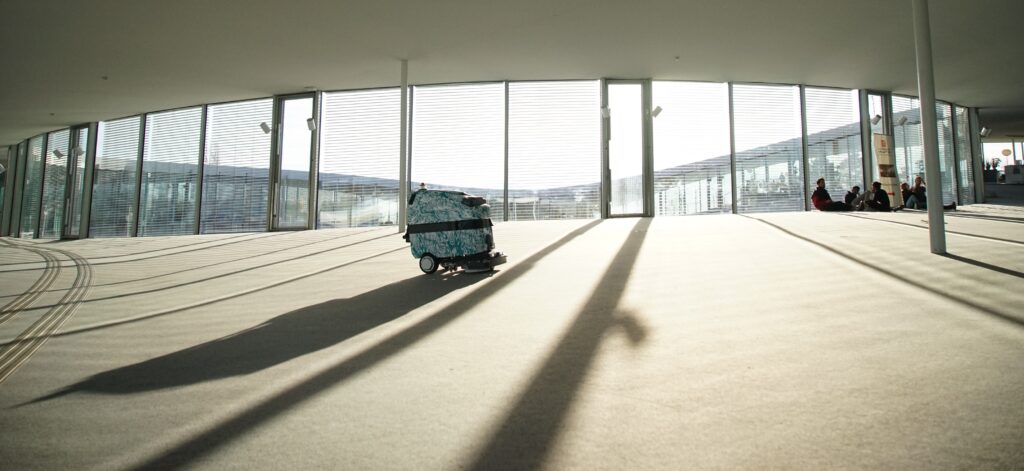
Neither a Robot nor a Cleaning Machine
Wetrok’s core competencies lie in the development of complete cleaning solutions, cleaning machines, cleaning agents and the training of specialists – always with an approach unlike any other on the market. So how did Wetrok come up with the idea of developing a robot? “We originally wanted to develop our best-seller, the Discomatic Mambo scrubber-dryer, into the world’s most compact and powerful scrubber-dryer,” explains Mark Meng, Head of the Machines Business Unit at Wetrok. Consumer research has shown that customers have five key requirements for an optimised floor cleaning solution: it must be efficient, counteract staff shortages, ensure consistent quality on a daily basis, be as compact as possible and provide optimal support for cleaning staff performing repetitive tasks. “Neither the large machines nor the fully autonomous, personnel-independent systems currently available on the market are the right solution to meet these requirements. We needed to think differently,” reports Mark Meng.
Collaboration with ETH Spin-Off
Wetrok already had plenty of know-how regarding floor cleaning machines and their programming – the crucial missing piece of the puzzle was robotics expertise. In 2016, Wetrok turned to one of the most internationally renowned locations for robot technology: ETH Zurich.
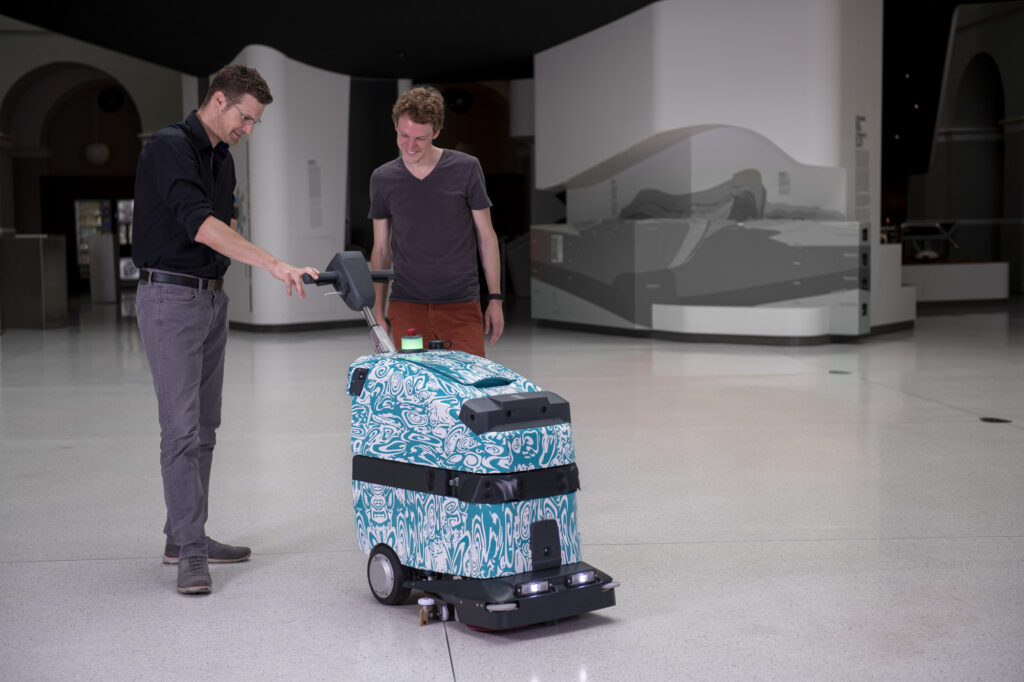
The university is known for collaborating with industrial companies to find innovative solutions to almost unsolvable problems – solutions found by combining theoretical knowledge with the wealth of industrial experience brought by the companies. The collaboration commenced and a corresponding department was formed by the name of Sevensense as a spin-off of ETH. After countless brainstorming sessions, programming experiments and test runs, the project team presented the collaborative robot prototype at the international cleaning trade fair Interclean in 2018: Marvin – the friendly cleaning robot.
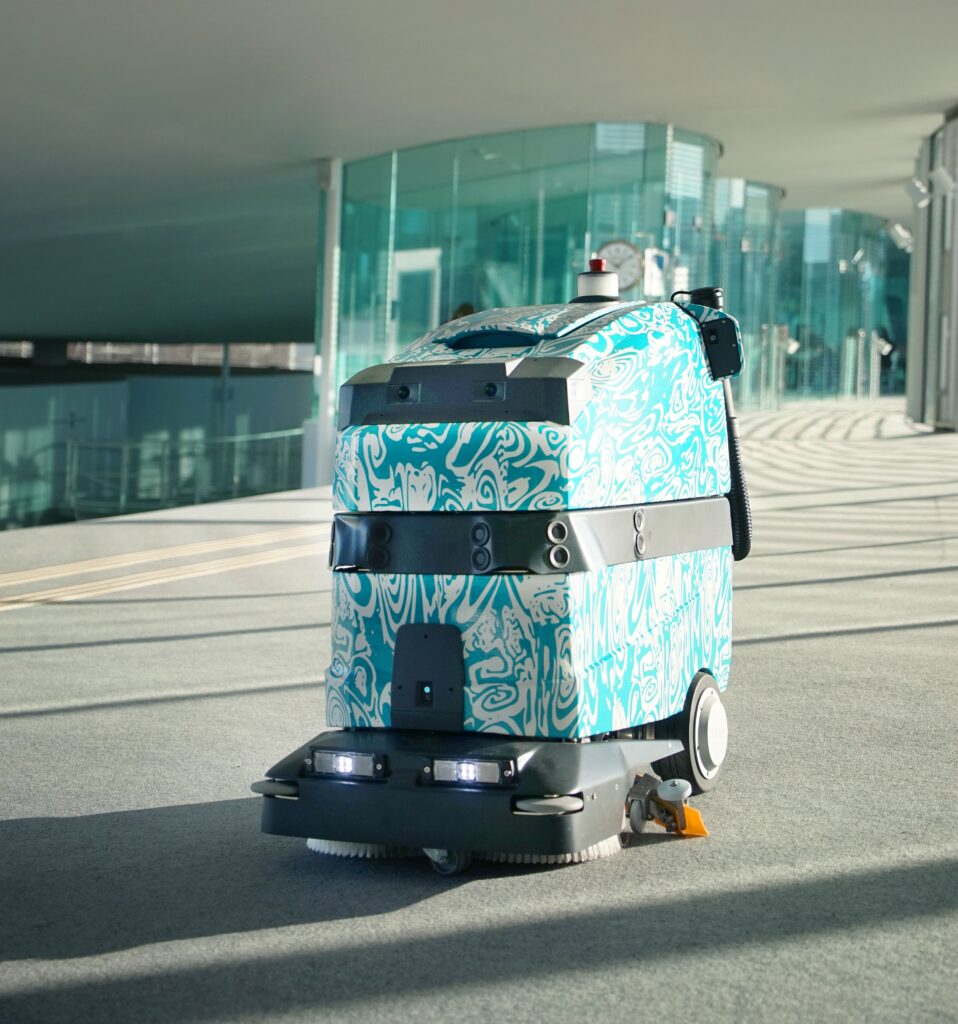
Friend Not Foe
Marvin gives new meaning to the terms “robotics” and “collaboration”. He’s new, yet familiar. In terms of appearance, he looks just like a scrubber-dryer. “Many people have reservations about robots – on the one hand, they fear being replaced by a machine, and on the other, many robots appear bulky and intimidating. In order to get cleaning staff used to working with the robot, we decided to give Marvin the appearance of a regular scrubber-dryer,” explains Mark Meng. Space considerations also played a crucial role in the design – Marvin is considerably smaller and more manoeuvrable than his bulky counterparts. This is a clear advantage in narrow corridors and furnished rooms. “We didn’t just want to develop a robot that cleans, but a high-quality cleaning machine that can also function autonomously. There is a major difference, which is evident in the design,” the Wetrok machine specialist explains. Marvin offers 2-in-1 functionality: when staff deactivate the robot function, the machine can be used as a regular scrubber-dryer.
Personnel Teach, Marvin Learns
What really sets Marvin apart from his robot counterparts is his ability to learn. His teach-and-repeat technology makes him an interdisciplinary forerunner, particularly when it comes to user-friendliness. Anyone can operate Marvin. Mark Meng explains how the teach-and-repeat concept works: “A member of the cleaning staff cleans the floor with Marvin just like they would with a conventional scrubber-dryer. Meanwhile, Marvin memorises the cleaning process and specific features of the room using sensor technology. He can then perform the same task autonomously at the push of a button.”
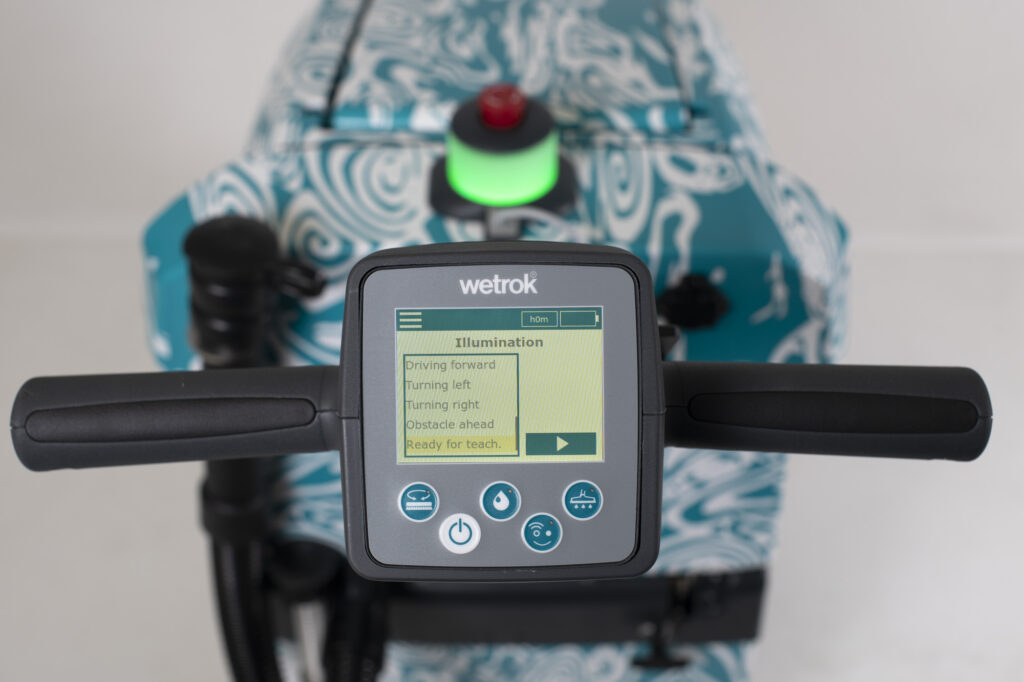
So will there be any need for cleaning staff in the future? “Absolutely,” states Mark Meng, “our goal is not to replace cleaning staff but to relieve them of the monotonous task of cleaning floors. This enriches the employees’ areas of responsibility and gives them more time for more demanding and complex tasks for which a human workforce is needed.” This includes cleaning glass façades, inspections by team leaders and other special cleaning tasks. If there is more time available for manual cleaning, the overall level of cleanliness and hygiene in the building is improved – an extremely valuable asset, especially during a pandemic.
Assisting with the Coronavirus Crisis
The support of a robotic colleague during a pandemic prevents employees from becoming overworked – while Marvin cleans the floor, cleaning staff can concentrate on disinfecting surfaces and equipment. Marvin also offers a mechanical solution for floor disinfection, which, until now, was impossible with walk-behind scrubber-dryers (staff would step in the disinfectant) or classic cleaning robots (too bulky for most rooms): Marvin can disinfect floors using a special disinfection unit, which can be attached to the robot’s suction nozzle – autonomous, efficient and consistent in quality.
Real-World Successes and Snags at ETH
The moment of truth came several weeks ago at ETH Zurich: Marvin was used in a normal cleaning cycle at a customer property for the first time: the reception area of the university’s Earth Sciences Department, where the disguised prototype was used to clean the 600-metre-squared slab floor.
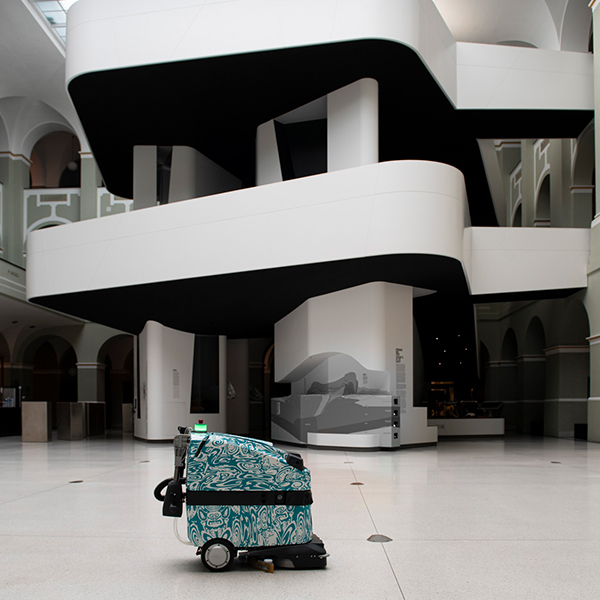
His deployment is being supervised by a well-known industrial cleaning company, the project developers at Wetrok, and Sevensense. Once the cleaning company had initially scanned the floor area with Marvin and saved the process, the robot was able to clean the floor autonomously – in under 30 minutes day after day. The robot skilfully manoeuvres around immovable obstacles such as information boards and poster stands, and stops in front of moving obstacles such as passers-by, ensuring a safe and straightforward cleaning process.
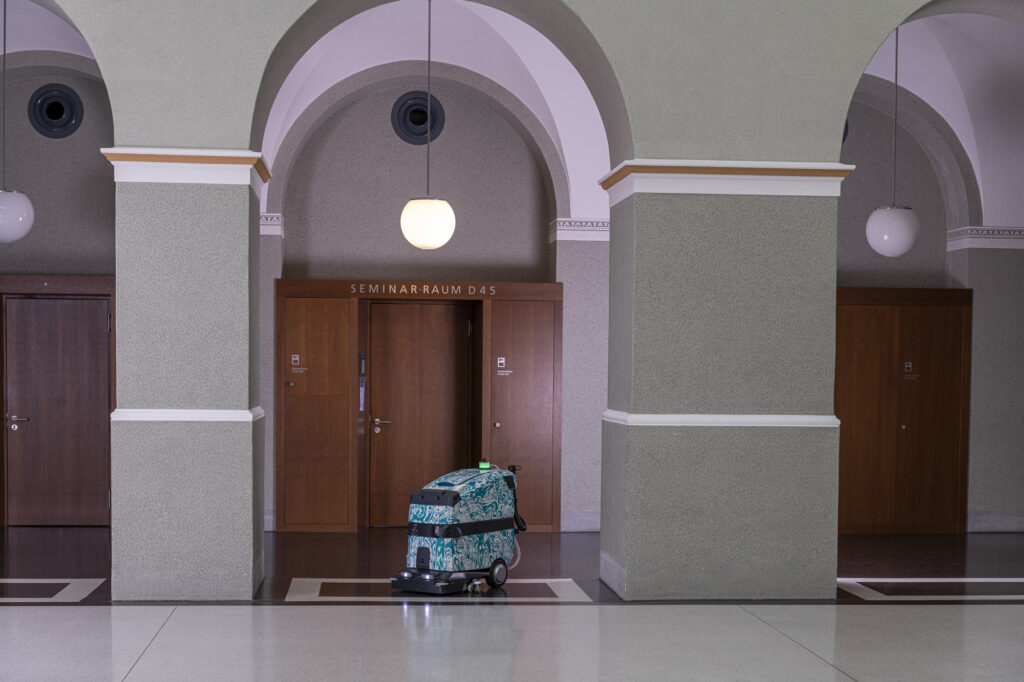
The customer has been thoroughly impressed. They particularly like the simple operating display and the remarkable response from the cleaning staff, claiming it was the first robot to arouse curiosity rather than fear. Nevertheless, there remain a few teething problems to be solved – such as detecting transparent room dividers. Marvin relies on an optical system for spatial perception. Unfortunately, this means that he sees through glass walls and misjudges the space. The developer team is well on the way to finding an innovative solution to this early hiccup. “Safety is the number one priority when designing a robot. We will only bring Marvin to market when we are able to approve him for all types of properties in good conscience,” assures Mark Meng. One thing is already certain: with Marvin, Wetrok has completely changed the landscape of collaborative industrial robots.
Marvin @ work (Video):
About Wetrok:
Wetrok AG develops and sells solutions for professional industrial cleaning. The company supplies over 100,000 customers in more than 40 countries with cleaning products, cleaning machines, consumables and practical training. The products and cleaning systems are developed in the company’s research department at their Swiss headquarters in Zurich-Kloten. Wetrok AG is part of the Diethelm Keller Group.
About Sevensense:
Sevensense is a spin-off of ETH Zurich founded in 2018, and already employs more than 25 robotics specialists. Together, they have developed an autonomy kit, which transforms any manual machine – from cleaning machines to forklift trucks – into an autonomous service robot. The kit consists of sensor technology, which works together with advanced artificial intelligence to allow the robot to safely manoeuvre and avoid collisions in any environment.
